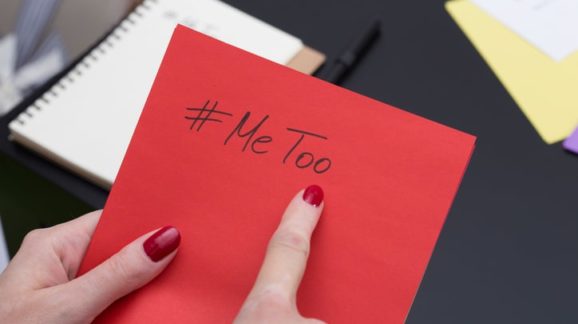A Movement toward Descriptive Representation

The accusations of sexual misconduct brought by several women against Hollywood mogul Harvey Weinstein created a social movement and heightened awareness. Women began to share their stories of assault and sexual harassment as part of the #MeToo movement. The campaign, which originated on Twitter, has since moved from on the social media platform to everyday conversation and discourse.
Since the rise of the #MeToo movement, there has been the largest group of resignations in a single congressional session since 1901. Though not all of these resignations can be solely attributed to sexual improprieties, there has never been such a concentration of resignations stemming from accusations of sexual misconduct. Sen. Dianne Feinstein (D-Calif.) predicted that 2018 would the “Year of the Woman,” with female candidates being elected to office in higher proportions than usual.
Women are now being encouraged to speak out against injustices they face, and organizations such as EMILY’s List and She Should Run are recruiting women to run for office. These recruitment efforts started with the election of Donald Trump and were furthered by the Women’s March. Combined with the backlash to the current political atmosphere, the #MeToo movement has the potential to change congressional makeup and make the legislative body more representative.
Women hold only 19.8 percent of seats in the current Congress (22 percent in the Senate and 19.3 percent in the House). Descriptive representation—the extent to which those in Congress physically resemble the general electorate—is not much better at the state level. Women hold 23.7 percent of statewide elective executive offices and 25.3 percent of state legislative seats. While there had been a gradual increase in the number of women seeking office since the 1980s, this number plateaued and later decreased for the first time during the 2010 midterms. This gender gap is even more stark when placed in an international perspective; in 2017, the United States ranked 99th out of 193 countries on seats held by women in national legislatures.
A pivotal 2004 study by Richard Fox of Loyola Marymount University and Jennifer Lawless of American University examined the reasons behind the underrepresentation of women in Congress. They suggested there is a gender gap in political ambition, which is attributable to two main factors. First, women are significantly less likely than men to be encouraged to run for office. Second, women are far less likely to view themselves as qualified to run for office.
They also found that when women do run for elected office, they are as likely as men to win. Therefore, the problem is not that women are not selected at the ballot, but rather, they are not encouraged to run and do not perceive themselves as qualified to run.
A Harvard study reached similar conclusions, using a regression discontinuity design, a method typically used to examine causal relationships. The results from the Harvard study suggested that the underrepresentation of women in the House of Representatives is attributable to the barriers of entering the arena rather than abject gender discrimination. Of course, this is not to say that there are not those who purposely do not vote for women simply due to their gender. Indeed, there are some who perceive women as less qualified, but the willingness to vote for a woman has gradually increased over time.
Fox and Lawless also conducted a survey in 2017 among potential candidates and examined what they call the “Trump Effect.” They defined the “Trump Effect” as the reactions to Trump’s election to office. These included the Women’s March that occurred in Washington, D.C. and 550 other cities in the United States, an increased attendance at training events held by organizations that recruit women to work on campaigns, and other activist events. They stated that political engagement is greater than it was prior to 2016, especially among women. Fox and Lawless found that while Trump’s ascension to the presidency created heightened political activity—particularly among Democratic women—this does not necessarily mean that more women will seek office.
In another report, Fox and Lawless noted that recruitment efforts by organizations can mitigate the gender gap in desire to run for office. They write, “but many barriers to women’s interest in running for office can be overcome with major cultural and political changes.” Their previous research posited that despite the visceral reactions to Trump, a substantial increase in female candidates may not occur. However, the addition of the #MeToo movement may augment the Trump Effect and foster a greater desire among women to run for office. In essence, this could be the perfect catalyst for better descriptive representation and a lessening of the gender gap in congressional makeup.
There are a number of factors that support the “Year of the Woman” narrative. First, the two barriers to entering politics outlined by Fox and Lawless are currently being addressed. The problem of women not being encouraged to run for office is currently being mitigated by numerous advocacy groups reaching out to potential female candidates and with female lawmakers recruiting other female candidates. Women may be viewing themselves as more qualified, as evidenced by reports that a record number of women are running for elected office.
Despite prior evidence suggesting visceral emotions and affect alone may not be enough to propel more women to seek out elected office, the force and addition of the #MeToo movement might be the impetus to incite political ambition among women. Though the events that inspired this social movement are appalling and inexcusable, it is nonetheless encouraging to see a path forward for better descriptive representation in Congress.